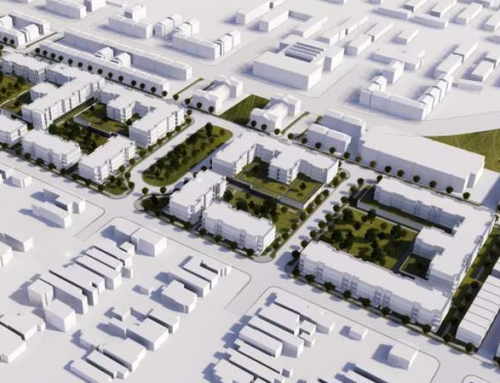The delivery method of a project can be a tricky process to navigate, but it is exceptionally important to the project going well for you. As the owner, it’s one of the many conditions you’ll need to work out with your vendors and contractors. It can be a little unclear what the best project delivery methods are, and what may be the pros and cons.
There are essentially four major methods for project delivery open to the owner of a construction project. While you may hear other methods bounced around, they are almost all just sub-methods of the ones we are discussing here. Which one will work best for your project?
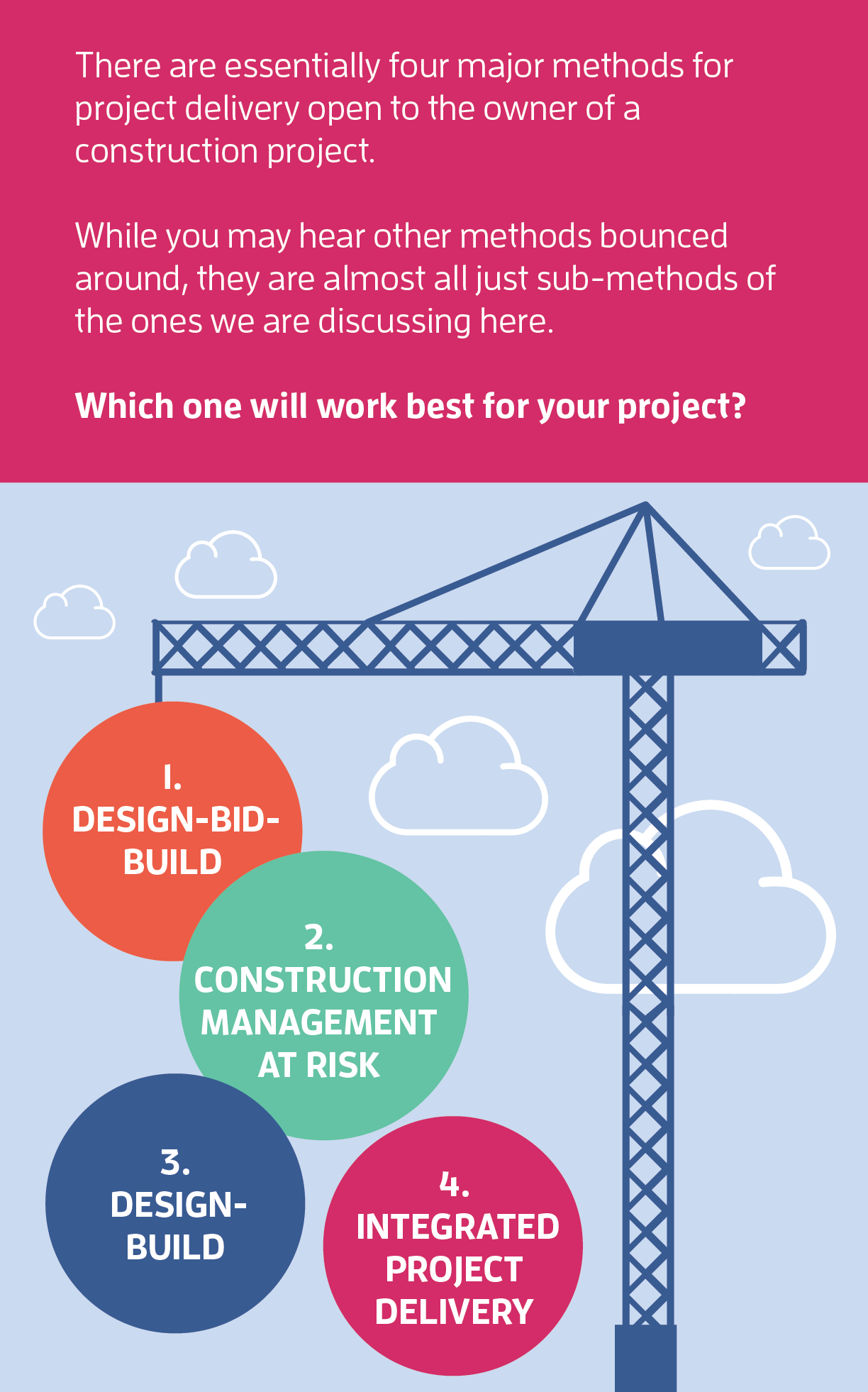
Design-Bid-Build
The most common method of project delivery, in Design-Bid-Build (DBB) you as an owner first hire an architect to design a project in its entirety. This part of the process includes not just creating a plan, but also providing specifications for project specifics and parameters. After the design is completed, the project is then bid on by multiple contractors and awarded based on the lowest responsive bid.
Multi-Prime Contracting falls under this method, as it is similar except for the contracting side. Instead of a general contractor, the owner selects multiple primary trade contractors in specific disciplines.
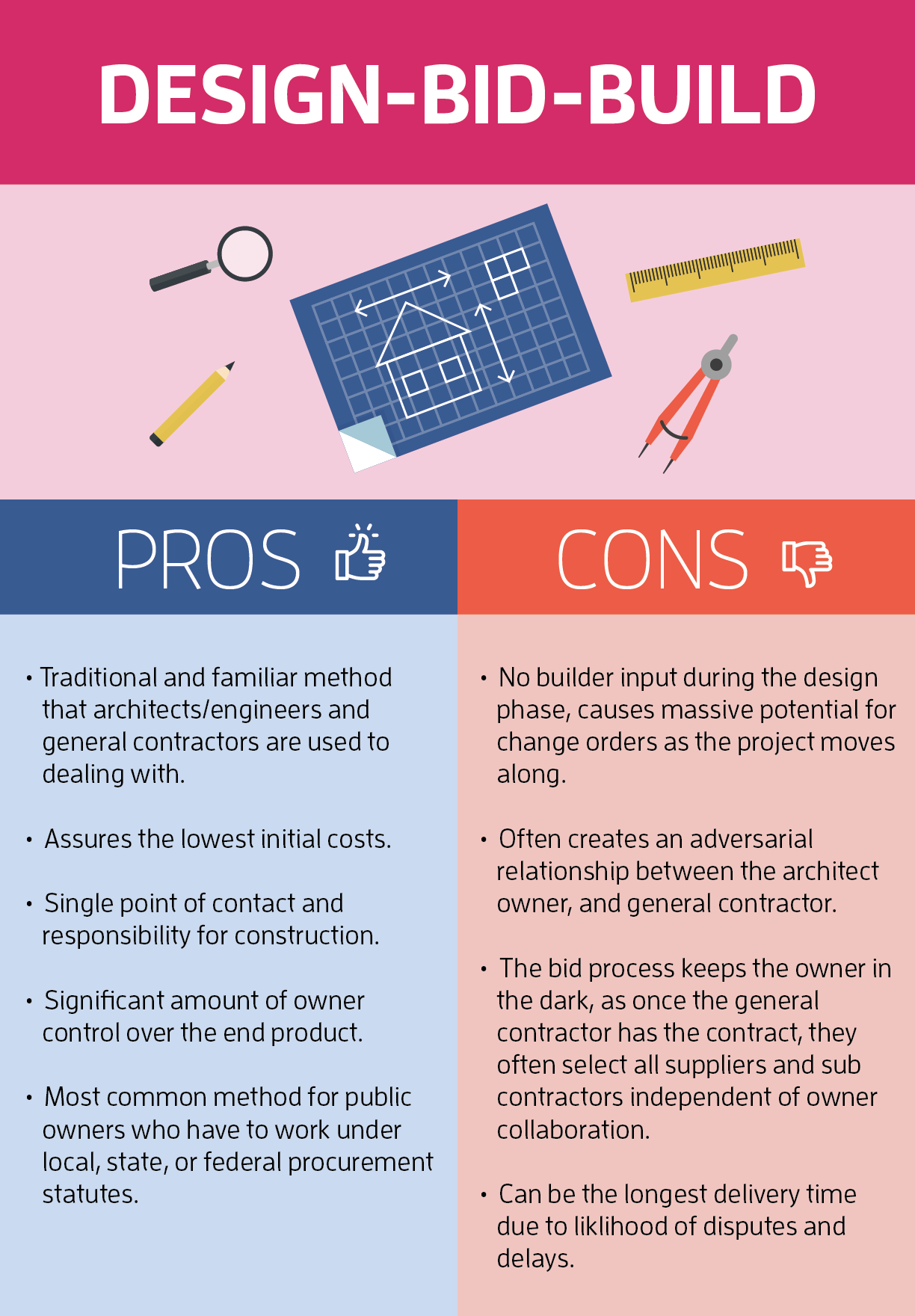
Pros
- Traditional and familiar method that architects/engineers and general contractors are used to dealing with.
- Single point of contact and responsibility for construction and assures the lowest initial costs.
- Significant amount of owner control over the end product.
- Most common method for public owners who have to work under local, state, or federal procurement statutes
Cons
- As there is no builder input during the design phase, there is a massive potential for change orders as the project moves along.
- This method often creates an adversarial relationship between the architect, owner, and the general contractor.
- The bid process keeps the owner in the dark, as once the general contractor has the contract, they often select all suppliers and subcontractors independent of owner collaboration.
- Can be the longest delivery time due to likelihood of disputes and delays.
Construction Management at Risk
A newer method than the previous method and the following one, it has nonetheless gained plenty of traction in recent years. Like DBB, the architect is hired directly by the owner. Additionally, the owner employs or hires a construction manager who provides guidance and leadership during the preconstruction phase. The construction manager is consulted throughout the design phase, and the owner has more guidance for the ongoing project on the project budget, design management, constructability and schedule issues. An owner’s selection of the construction manager needs to be made with specific qualifications in mind. Instead of waiting for the end of the competitive bid process, the construction manager pre-qualifies and hires a general contractor on the owner’s behalf to help with the preconstruction phase and assist the project team with estimating and scheduling. Before the start of construction, an agreement can be negotiated with the preconstruction phase general contractor to build the project providing its preconstruction services were satisfactory, or the project can be competitively bid to multiple contractors.

Pros
- Builder input at all phases, to provide input regarding materials, methods, scope of project, and more.
- Cost and schedule developed early and guaranteed before start of construction.
- Bid process for materials and subcontractors is transparent, and incremental cost estimates have been reviewed and modified during the design phase.
- There is a capability to fast-track early components of construction prior to design completion.
Cons
- The initial construction bids may not be as low as the DBB delivery with multiple contractors competing.
Design Build
Sometimes it is easier as an owner to deal with a single contract, and that’s where the Design-Build (DB) concept comes in. While it may sound similar to DBB, there are clear differences. In this method, the owner hires a design-build entity. That company or contractor then serves as the general contractor, while also serving as the design professional or possibly subcontracting to a design professional. If you are using this method, you’ll need to employ a well-defined scope for the project from the outset and having the expertise in-house or engaging an Owner’s Representative may be your key to success.
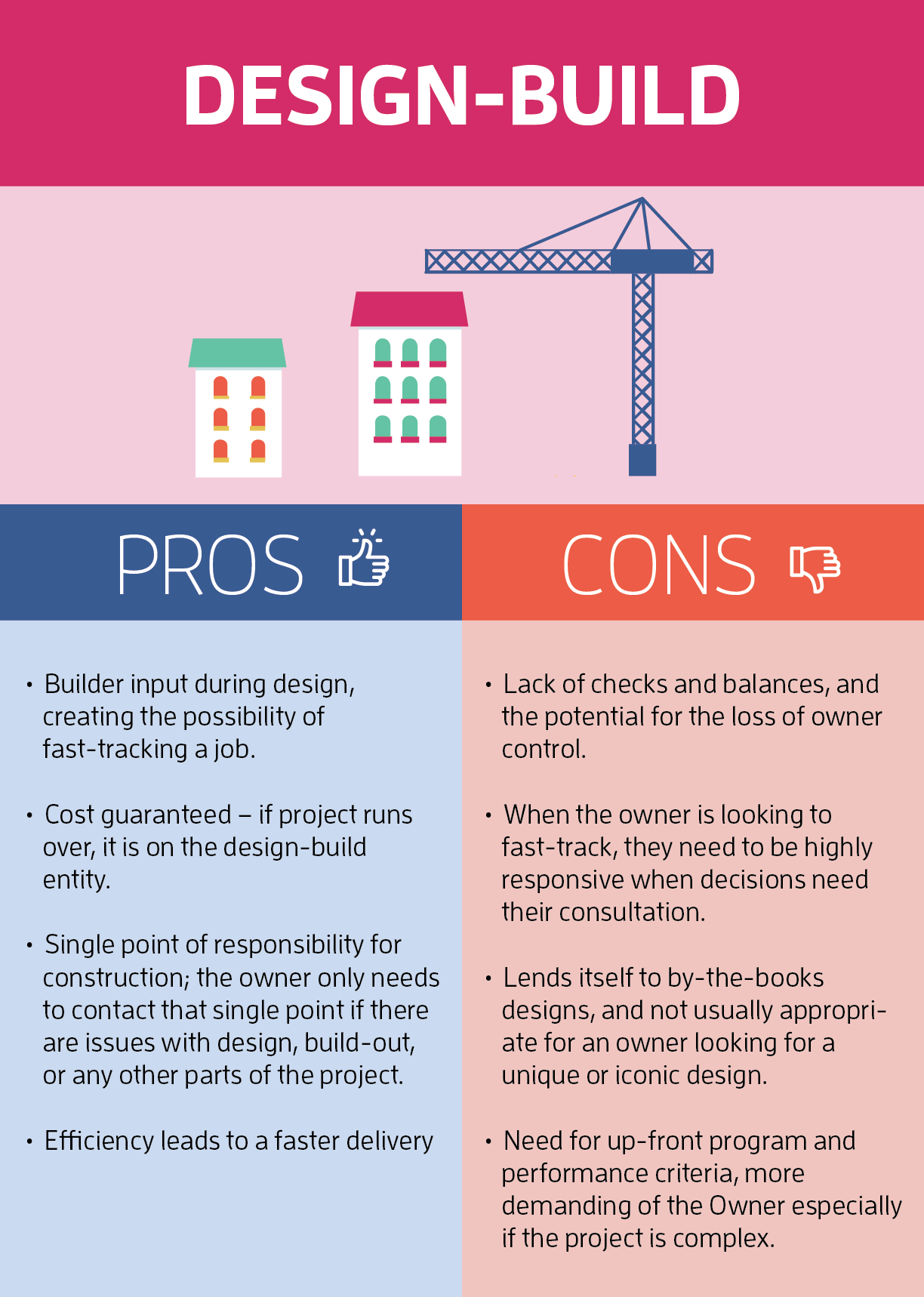
Pros
- Builder input during design, creating the possibility of fast-tracking a job.
- Cost guaranteed – if project runs over, it is on the design-build entity.
- A single point of responsibility for construction, meaning that the owner only needs to contact that single point if there are issues with design, build-out, or any other parts of the project.
- Efficiency leads to a faster delivery.
Cons
- Lack of checks and balances, and the potential for the loss of owner control.
- When the owner is looking to fast-track, they need to be highly responsive when decisions need their consultation.
- Lends itself to by-the-books designs, and not usually appropriate for an owner looking for a unique or iconic design.
- Need for up-front program and performance criteria, more demanding of the Owner especially if the project is complex.
Integrated Project Delivery
As a relatively new delivery method, it is also the least-used one at the present. Some of the reason behind that is a certain resistance to even recognize it as a formal delivery method instead of a subclass of one of the other methods. It is intriguing though – in Integrated Project Delivery, there is a multiparty agreement between the owner, the design team, and the construction side. Goals and objectives are established collaboratively, and a joint contract is signed.
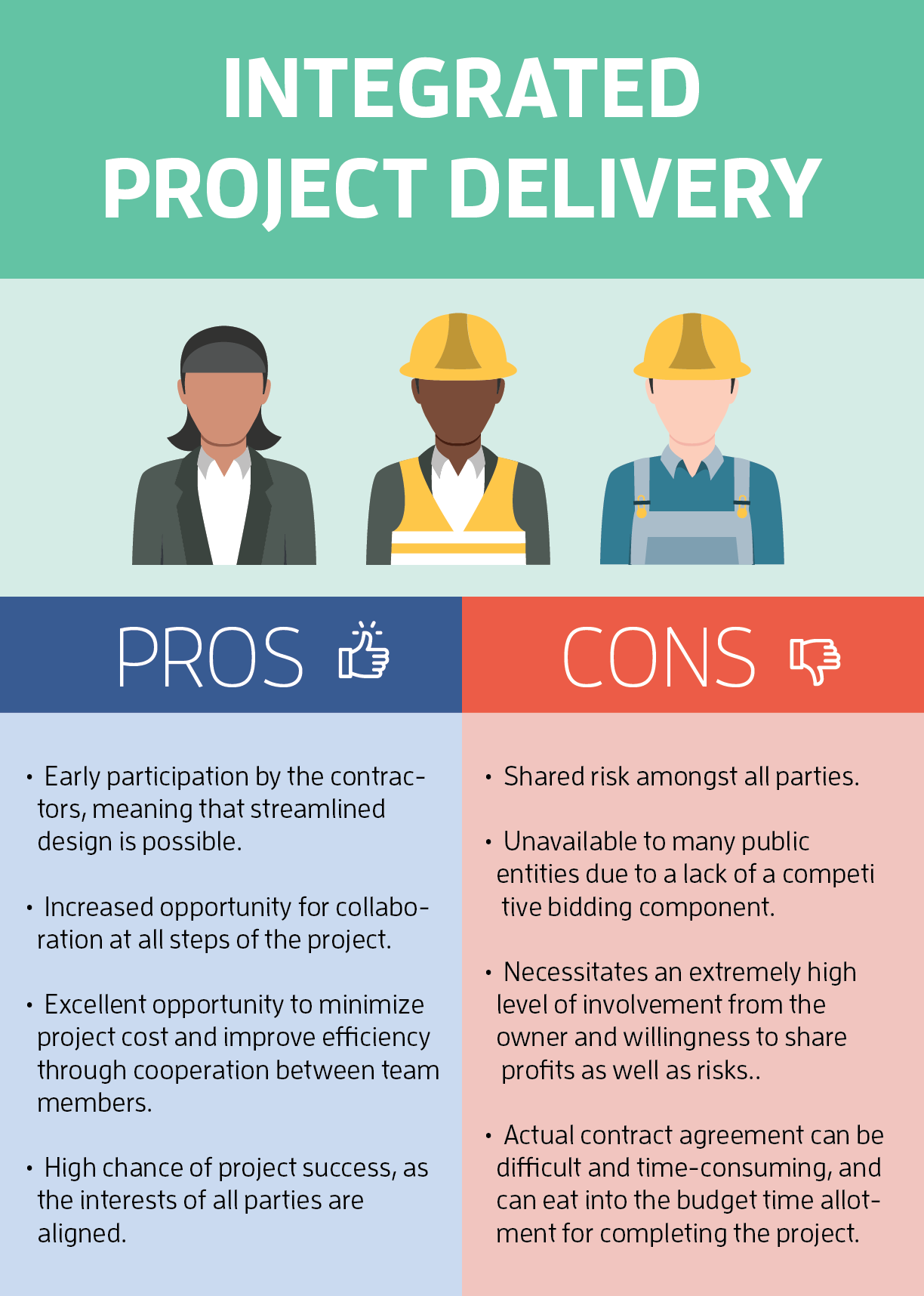
Pros
- Early participation by the contractors, meaning that streamlined design is possible.
- Increased opportunity for collaboration at all steps of the project.
- Excellent opportunity to minimize project cost and improve efficiency through cooperation between team members.
- High chance of project success, as the interests of all parties are aligned.
Cons
- Shared risk amongst all parties.
- Unavailable to many public entities due to a lack of a competitive bidding component.
- Necessitates an extremely high level of involvement from the owner and willingness to share profits as well as risks.
- Actual contract agreement can be difficult and time-consuming, and can eat into the budget time allotment for completing the project.
Choosing the right delivery method for your project can be the difference between a harmonious relationship and quality finished project, or constant conflict with a product you may not have full confidence in. It is a hard task, as project objectives can vary greatly. What worked for one project for you as the owner may not work for a future project. Consider factors such as goals, timeline, costs, complexity and more to find the right fit.
Here at S.L. Leonard and Associates, Inc., we understand the complexities of these methods as well as the advantages and disadvantages of each. As an Owner’s Representative or Project Manager, we are an experienced team that can discern which method will be appropriate for your upcoming project.


